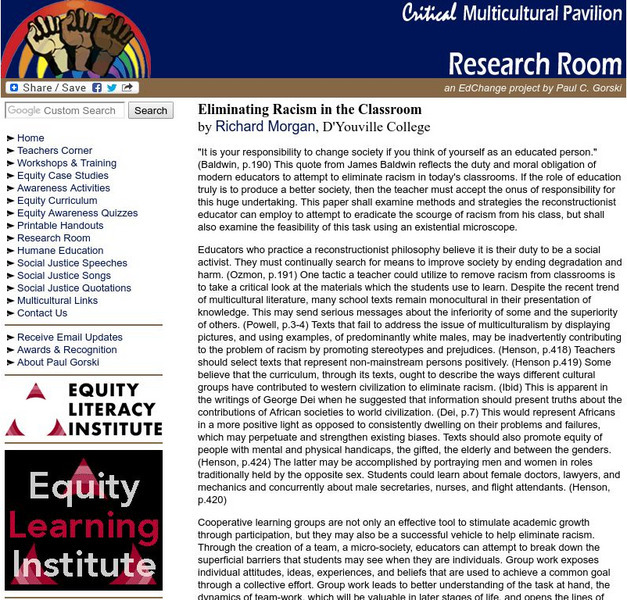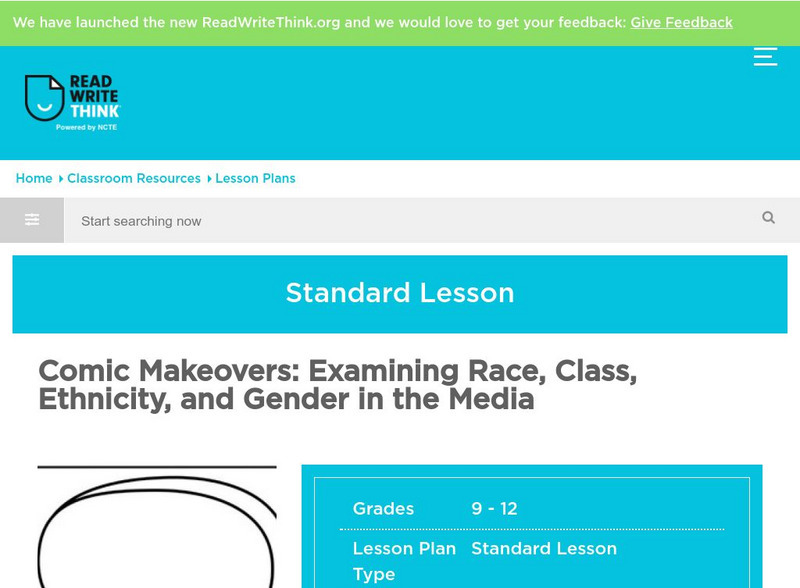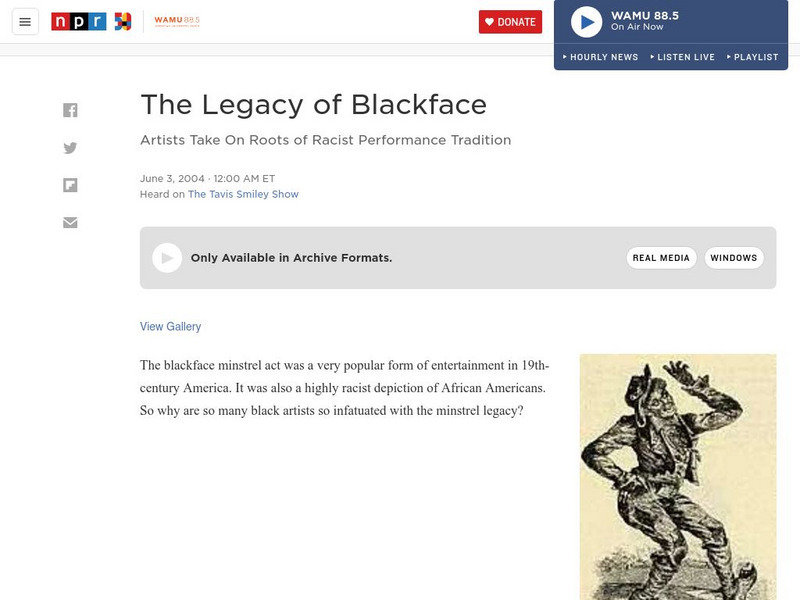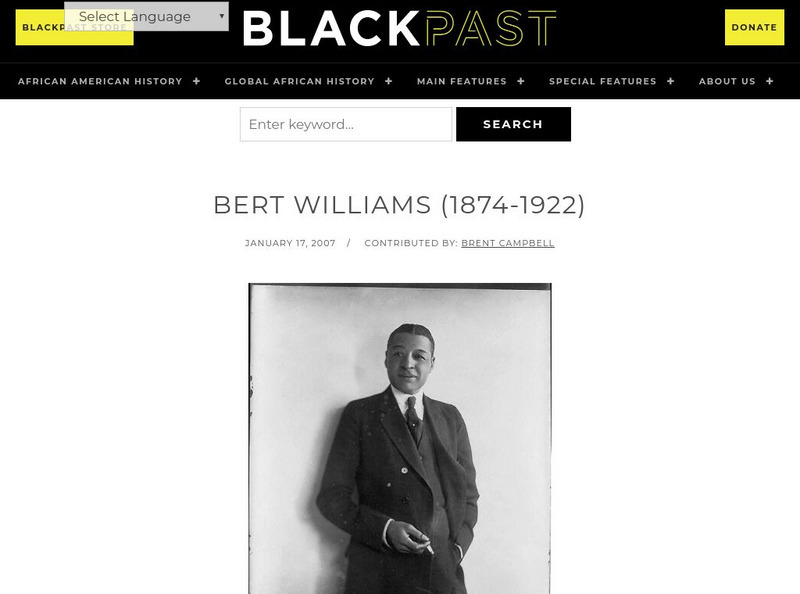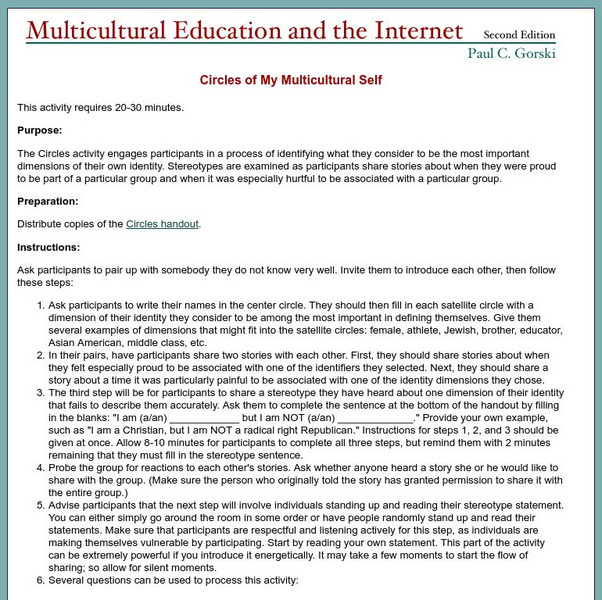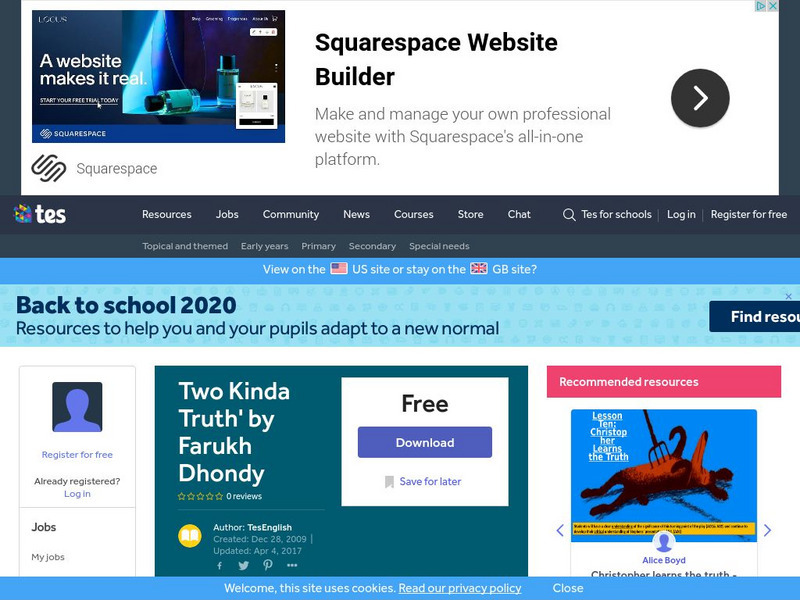Friesian School
Fresian.com: Stereotypes
This site gives an essay regarding various prejudices. Very informative and easy to understand.
Other
Eliminating Racism in the Classroom
This article provides some insight into ways to teach children about the negative effects of racism and the importance of doing that.
Other
Exploring Definitions: Discrimination, Racism & Sexism
A challenging exercise to help students define prejudice, discrimination, racism, sexism, and homophobia in their own words.
ReadWriteThink
Read Write Think: Examining Race, Class, Ethnicity, and Gender in the Media
Contains plans for five lessons that teach learners how to recognize and avoid stereotyping in media. In addition to objectives and standards, this instructional plan contains links to sites used in the lessons as well as assessment and...
Other
Family Law Center: Gender Bias in the Family Courts
This paper focuses on the subject of gender bias against men in reference to gaining custody of children in the Canadian Family Court system. The article does a good job at defining the bias and presenting examples of the myths and...
PBS
Billy Wilder: Film Noir Inventor and Genius
This site is a lesson plan focused on post-World War II America and the film making career of Billy Wilder. Details on the Film Noir genre and its reflection of shifting American values. Click to a biography and timeline of Billy...
Common Sense Media
Common Sense Media: Education: Cracking the Gender Code: Grades 6 8
Middle schoolers explore "boy codes" and "girl codes," and discuss the extent to which they shape people's online identities and relationships. Requires free membership.
Common Sense Media
Common Sense Media: Education: Gender Stereotypes Online: Grades 6 8
Students are introduced to the concept of gender stereotypes, in both an online and offline context. Students identify and discuss gender stereotypes in the "Dress Up Your Avatar" feature of a kids' virtual world. Free membership required.
Common Sense Media
Common Sense Media: Education: The Reality of Digital Drama (6 8)
Students discuss their impressions of peer drama, both online and as depicted on reality TV. Students compare and contrast two videos - one featuring a candid discussion between middle school students about online drama and the other...
NPR: National Public Radio
Npr: The Legacy of Blackface
This site is an NPR two-part report for the Travis Smiley Show explores the history of Blackface and it's impact on society both past and present. There are related stories on Hip-hop and Racial Harassment.
Other
What Is a Worldview?
A detailed article about how humans develop a "worldview" and how they see themselves in the world interacting with other people. A worldview can be religious or non-religious.
University of Colorado
University of Colorado: Conflict Research Consortium: Prejudice Reduction Programs
Information on the suppression of stereotypes and elimination of prejudice.
Jewish Museum
Jewish Museum: Examining Identity in Contemporary Art and Photography [Pdf]
This website contains photographs of many in the multicultural community of Jews in the United States. There are discussion questions and cross-curricular links for integration of culture into your curriculum. A glossary is also included.
Other
Anti Discrimination Committee: What Teachers Can Do
This site lists ways to combat bias and stereotypes of Arabs and Arab Americans in the curricula or with students of all ages. Includes a brief bibliography of suggested works on multicultural education.
Wisc-Online
Wisc Online: The Reality of Sterotypes
In this learning module, the user will understand how believing in and using common stereotypes can get in the way of working together. It also offers an exercise on stereotyping.
Black Past
Black Past: Bert Williams
This encyclopedia article gives a good overview of the life of Bert Williams, a black entertainer of the early 1900's who broke many color lines.
McGraw Hill
Circles of My Multicultural Self a Classroom Activity
Activity helps students identify what they consider to be the most important parts of their own identity and develop a better understanding of stereotypes.
CommonLit
Common Lit: Themes: Men & Women: How Do We Define the Roles of Men and Women?
This is a collection of Grade-Leveled texts (3-12) to address the question, "How do we define the roles of men and women?" Select a grade level and a collection of on grade-level reading passages on the topic comes up. [Free account...
Khan Academy
Khan Academy: Terms and Issues in Native American Art
Stereotypes persist when discussing Native American arts and cultures, and sadly many people remain unaware of the complicated and fascinating histories of Native peoples and their art. Read examples of these stereotypes and what changes...
Khan Academy
Khan Academy: Discrimination Questions
Practice for the MCAT by answering questions on discrimination.
PBS
Pbs Learning Media: Point of View: Minding the Gap: Lesson Plan
Minding the Gap is a coming of age film by Bing Liu. Starting in high school, Bing begins to make skate videos. What starts as a hobby ends up as a profound exploration of issues that is likely to resonate deeply with students.
PBS
Pbs Learning Media: Point of View: Still Tomorrow: Lesson Plan: Stereotypes, Cerebral Palsy, and Poetry
In this multidisciplinary lesson, students examine stereotypes about people with physical disabilities. Using clips from Still Tomorrow, a documentary about Chinese poet Yu Xiuhua, who has cerebral palsy, students will gain awareness of...
PBS
Pbs Learning Media: Point of View: Still Tomorrow: Lesson Plan Clips: Stereotypes, Cerebral Palsy, and Poetry
In this multidisciplinary lesson, students examine stereotypes about people with physical disabilities. Using four video clips from Still Tomorrow, a documentary about Chinese poet Yu Xiuhua, who has cerebral palsy, students will gain...
TES Global
Tes: Two Kinda Truth' by Farukh Dhondy
[Free Registration/Login Required] This site provides comprehension and theme-related activities to accompany Farukh Dhondy's short piece "Two Kinda Truth." False stereotypes and evidence of racism will be discussed in the lesson.

